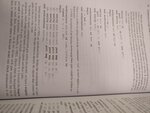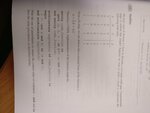eengr
Member level 4

FPGA coding style Behavioural vs structural Modelling
Hi All
I would like to use Xilinx Spartan-6 XC6SLX9 (TQFP-144) to design an address decoder for ISA Bus. The board would be connected to PC104 and will use ISA bus 8-bit data line to communicate. The task is to:
Off course ISA bus has its IOR & IOW lines that could be read to find out if it is Read operation or Write operation. Also, the clock signal is coming from ISA bus (PC104)
I am new to FPGA design & VHDL. This design has been done in the past by someone using schematic entry on Xilinx ISE using a different Xilinx FPGA device (which has gone obsolete) but I would like to use VHDL for it.
I have seen VHDL generated file of the old design and it looks more like component and instantiation in I think what is known as "Structural Modelling Style" (port mapping is generated for all logical symbols used in schematic entry)
If I look at the task at hand, it looks "simple" to me in that, I think could be implemented by using simple 'if' statements for above 4 cases & many be use CLK signal in process sensitivity list. I understand that it is something called 'Behavioural Modelling Style' i.e., looking at the inputs & outputs only (and treating everything in the middle as black box)
But then I started looking into a book 'Digital System Design with VHDL' by Mark Zwolinski in order to dig bit deeper to find out if 'Behavioural Style' would be a reasonable approach for me to take
I have attached the two pages of his book
 with this message
with this message
On page -42 it states that: While this model is perfectly acceptable as a description of a particular logical function, it does not correspond to any normally available piece of circuitry
Now, I am confused and struggling to understand if using Behavioural Modelling style will be good enough for my design OR would I need to start looking into Structural Modelling style? And what are the pros & cons (for this specific case) OR have i got wrong end of stick?
Any help would be greatly appreciated..
Hi All
I would like to use Xilinx Spartan-6 XC6SLX9 (TQFP-144) to design an address decoder for ISA Bus. The board would be connected to PC104 and will use ISA bus 8-bit data line to communicate. The task is to:
- Direct the data from ISA 8-bit data-lines to 1st set of 8-bit OUTPUT lines of FPGA if address on ISA Address bus is say 0x500.
- Direct the data from ISA 8-bit data-lines to 2nd set of 8-bit OUTPUT lines of FPGA if address on ISA Address bus is say 0x502.
- Direct the data from 1st set of 8-bit INPUT lines from FPGA to 8 bit ISA Data bus if the address on ISA Address bus is say 0x503.
- Direct the data from 2nd set of 8-bit INPUT lines from FPGA to 8 bit ISA Data bus if the address on ISA Address bus is say 0x504.
Off course ISA bus has its IOR & IOW lines that could be read to find out if it is Read operation or Write operation. Also, the clock signal is coming from ISA bus (PC104)
I am new to FPGA design & VHDL. This design has been done in the past by someone using schematic entry on Xilinx ISE using a different Xilinx FPGA device (which has gone obsolete) but I would like to use VHDL for it.
I have seen VHDL generated file of the old design and it looks more like component and instantiation in I think what is known as "Structural Modelling Style" (port mapping is generated for all logical symbols used in schematic entry)
If I look at the task at hand, it looks "simple" to me in that, I think could be implemented by using simple 'if' statements for above 4 cases & many be use CLK signal in process sensitivity list. I understand that it is something called 'Behavioural Modelling Style' i.e., looking at the inputs & outputs only (and treating everything in the middle as black box)
But then I started looking into a book 'Digital System Design with VHDL' by Mark Zwolinski in order to dig bit deeper to find out if 'Behavioural Style' would be a reasonable approach for me to take
I have attached the two pages of his book

 with this message
with this messageOn page -42 it states that: While this model is perfectly acceptable as a description of a particular logical function, it does not correspond to any normally available piece of circuitry
Now, I am confused and struggling to understand if using Behavioural Modelling style will be good enough for my design OR would I need to start looking into Structural Modelling style? And what are the pros & cons (for this specific case) OR have i got wrong end of stick?
Any help would be greatly appreciated..






